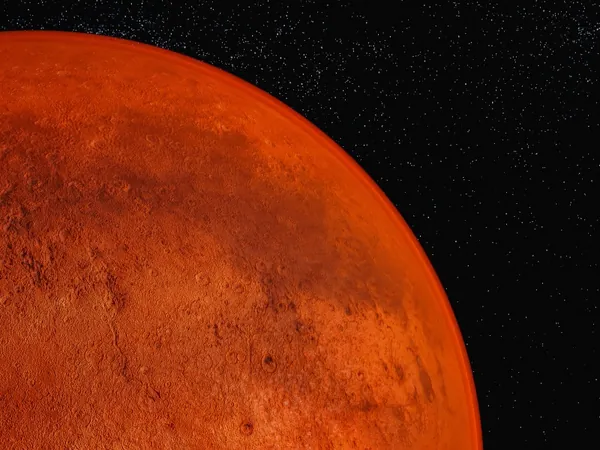
Revolutionary Irish Research Paves the Way for Building Bricks on Mars!
2024-10-07
Author: Nur
Revolutionary Irish Research Paves the Way for Building Bricks on Mars!
In a groundbreaking discovery, researchers at Trinity College Dublin's Amber research centre have unveiled a revolutionary method for constructing durable building materials on the Moon and Mars, using local resources that could redefine interstellar real estate. This innovation is particularly timely as humanity looks toward the stars and aims to establish semi-permanent bases on other celestial bodies.
The team has harnessed the power of carbon nanotubes, tiny, straw-like structures made from carbon atoms, to transform loose surface deposits of regolith—composed of dust and broken rock—into robust building materials. Their recent research indicates that with just small amounts of these nanotubes, they can bind fine lunar and Martian sand into solid 'bricks' that boast a strength comparable to granite.
Project lead Prof. Jonathan Coleman explained, "Our findings demonstrate that carbon nanotubes possess mechanical properties that outperform even the strongest polymers available today." The research has gained significant visibility during the World Space Week, running from October 4 to 10, highlighting its importance and potential applications.
Unlike previous methods that required extreme temperatures around 300 degrees Celsius to create polymer-based constructions, the innovative process developed at Amber operates at a much more manageable temperature of just 70 degrees Celsius. By mixing small quantities of carbon nanotubes with inorganic powders, including simulants of lunar and Martian soil, the researchers can create impressively robust composites through low-temperature pressing.
What’s even more fascinating is the dual functionality of the material. Not only is it strong, but it also exhibits piezoresistivity—meaning it can sense changes in its electrical resistance when mechanically stressed. This feature allows it to act as a sensor for structural integrity, helping to monitor the health of the buildings constructed from these materials.
The implications of this technology are enormous. Astronauts would only need minimal additives and water from Earth to create a slurry that, when compacted, forms reliable bricks. This could ultimately lead to the establishment of the first sustainable habitats on the Moon, Mars, and potentially other planets in our solar system.
As exploration efforts intensify and the dream of colonizing other worlds comes closer to reality, innovations like this one from Ireland underscore the pivotal role of advanced materials science in shaping the future of space habitation. Who knows? The next giant leap for mankind might just start with an Irish-made brick on the surface of Mars!




 Brasil (PT)
Brasil (PT)
 Canada (EN)
Canada (EN)
 Chile (ES)
Chile (ES)
 España (ES)
España (ES)
 France (FR)
France (FR)
 Hong Kong (EN)
Hong Kong (EN)
 Italia (IT)
Italia (IT)
 日本 (JA)
日本 (JA)
 Magyarország (HU)
Magyarország (HU)
 Norge (NO)
Norge (NO)
 Polska (PL)
Polska (PL)
 Schweiz (DE)
Schweiz (DE)
 Singapore (EN)
Singapore (EN)
 Sverige (SV)
Sverige (SV)
 Suomi (FI)
Suomi (FI)
 Türkiye (TR)
Türkiye (TR)